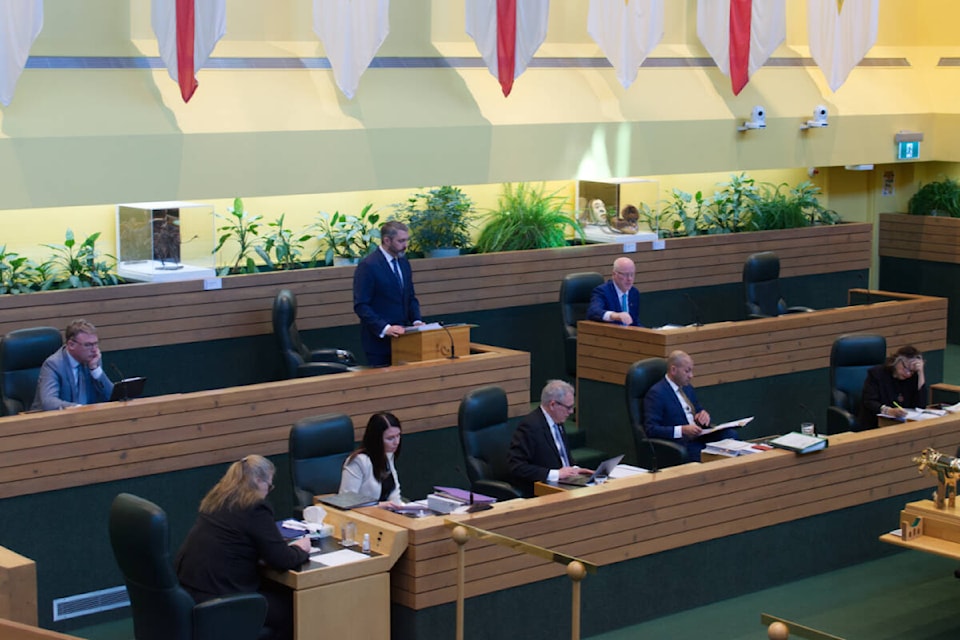More than 7,100 plan members signed up for extended health care in the Yukon — including MLAs — may find themselves digging deeper into their pockets to access their group insurance benefits plan when rates soar by more than half next month.
Extended health-care rates for Yukon government retirees and employees and the employer will go up by 52.8 per cent.
The new premium rates for the extended health-care insurance plan, provided through Canada Life, are effective April 1.
A March 21 email response to the News’ questions from spokesperson Ash Kayseas of the Yukon Public Service Commission broke down the total 7,123 people impacted by the update.
Those affected include 3,455 people from the Yukon Employees’ Union, 935 from the Yukon Association of Education Professionals, 268 “confidential excluded” (which refers to employees who are not bargaining unit employees due to being employed in a confidential capacity and are also not management), 560 “management excluded” (in other words, they are not part of a union), 19 MLAs and 1,886 retirees.
Retirees account for 27 per cent of the plan, Kayseas said.
During the question period in the Yukon Legislative Assembly on March 18, Yvonne Clarke, the Yukon Party MLA for Porter Creek Centre, said her party has heard from dozens of current and retired employees about how hard-hitting the increase will be.
Clarke asked the minister responsible for the Public Service Commission to explain what she called a “massive” jump and who decided on it.
Minister Sandy Silver pinned the decision on a joint management committee that consists of employer and employee representatives. (During the question period, Silver mentioned three different names for the group responsible. The News confirmed he meant the joint management committee.)
“They are responsible for determining the benefit design, setting the premium rates and operating on a consensus basis,” Silver added in a subsequent response.
The Yukon Party provided the News with an email that went out on March 14 about the changes. The email contains a deadline of March 25 to amend one’s coverage. If one opts out, there’s no option to opt back in, as noted in the email.
Clarke pressed on why more notice wasn’t given.
Silver said increases to the plan aren’t extraordinary to the Yukon, citing a rise in usage and inflation impacting plan sponsors and insurers across Canada.
Silver said the Yukon government faces $7.6 million in increases.
“The government — the employer itself — pays 85 per cent of the premium, so it’s not lost on us as far as the increased costs go,” he said.
Clarke described the increases as “distressing and shocking” based on emails her party has gotten.
She wondered if Silver would work with the provider to “explore options” to address the hike. She suggested spreading the increase out over multiple years or negotiating a better deal.
Silver refused to intervene, stating that it was not his role.
“It’s not up to the minister responsible to negotiate,” he said.
“The rates are going to go up anywhere from $15 to $50 for employee benefits. Again, the increase in contributions to insurance benefits is due to an increase in the overall benefits used, benefit coverage, costs per claim, specific costs associated with high-cost specialty drugs, vision claims, paramedic services, out-of-country expenses, and also insured administration fees.”
Yukon NDP Leader Kate White commented on the “sharply” increased employee benefits premiums in a written statement.
One of her main concerns is that retired Yukon government workers don’t have representation on the joint management committee. She said that’s a problem because retirees don’t have an employer to offset the rising premiums like current staff do.
To reporters in the lobby of the Yukon legislature on March 18, White called it “sticker shock.”
“It’s disappointing to know that they weren’t able to negotiate a better deal, and we hope that this isn’t the end,” she said.
On March 20, when pressed by the Official Opposition on his authority to step in, Silver said, “The only way the minister would have the ability to change these recommendations would be if I was instructed to do so from the [joint management committee] itself.”
He noted the committee operates on a consensus basis and requires a quorum at meetings.
The committee decided on the benefit rates at its Feb. 29 meeting. After that meeting, recommendations were drafted and presented to the minister for review, per Kayseas.
The Public Service Commission notified retirees and employees of the rate increase on March 14 by email or letter.
“As in prior years, mid-March is when plan members are notified of premium changes,” Kayseas said.
Contact Dana Hatherly at dana.hatherly@yukon-news.com
